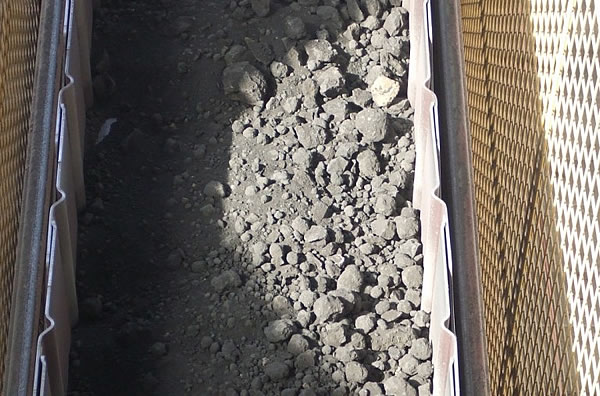
What can the clinker cooler do for the environment?
We think a lot.
Ecology and economy are not mutually exclusive; on the contrary, they go hand in hand.
Heat recovery has been an essential aspect of cooler design for years. It cannot only be reduced to the grate system. The cooler must be viewed holistically.
The grate system must optimally distribute the cooling air over the grate surface, while preventing clinker from falling through (spillage) and lasting for many years. Friction means wear and increased electrical consumption. Every movable gap that can be eliminated is an improvement.
Grate spillage is an indicator of the quality achieved. Movements between clinker and grate must be reduced or, even better, eliminated as far as possible.
Transport efficiency is another indicator of the quality achieved. Reciprocating movements associated with large masses, whether steel structure or clinker masses, are to be reduced or eliminated. Drives and bearings benefit from a rectified movement.
In summary, the path from the reciprocating grate cooler via the walking-floor cooler to the Revolving Disc Cooler shows the way.
Low-dust cooling
Low-dust cooling and dust that remains in the cooler relieves the firing process, the wear on the refractory and the cooler exhaust air filter.
The use of the energy in the clinker bed after the heat recovery should make sense, but not hinder the heat recovery and the burning process. Priorities must be set clearly. Energy recovery can be optimized but the cooler should not be misused as a generator.

No detail may be neglected in terms of optimization. Even an air duct deserves attention during engineering.
It doesn't work without alternative fuels!
With the increase in alternative fuels, heat recovery and in particular high uniform secondary and tertiary air temperatures became more and more important. These determine the kiln stability.
The selection and preparation of the alternative fuels pose ever greater challenges for the cooler and ultimately for the entire kiln line. Whatever fuel is used, the burned clinker should have predictable cooling properties so that the entire process can be optimized.
We think a lot.
Ecology and economy are not mutually exclusive; on the contrary, they go hand in hand.
Heat recovery has been an essential aspect of cooler design for years. It cannot only be reduced to the grate system. The cooler must be viewed holistically.
The grate system must optimally distribute the cooling air over the grate surface, while preventing clinker from falling through (spillage) and lasting for many years. Friction means wear and increased electrical consumption. Every movable gap that can be eliminated is an improvement.
Grate spillage is an indicator of the quality achieved. Movements between clinker and grate must be reduced or, even better, eliminated as far as possible.
Transport efficiency is another indicator of the quality achieved. Reciprocating movements associated with large masses, whether steel structure or clinker masses, are to be reduced or eliminated. Drives and bearings benefit from a rectified movement.
In summary, the path from the reciprocating grate cooler via the walking-floor cooler to the Revolving Disc Cooler shows the way.
Low-dust cooling
Low-dust cooling and dust that remains in the cooler relieves the firing process, the wear on the refractory and the cooler exhaust air filter.
The use of the energy in the clinker bed after the heat recovery should make sense, but not hinder the heat recovery and the burning process. Priorities must be set clearly. Energy recovery can be optimized but the cooler should not be misused as a generator.

No detail may be neglected in terms of optimization. Even an air duct deserves attention during engineering.
It doesn't work without alternative fuels!
With the increase in alternative fuels, heat recovery and in particular high uniform secondary and tertiary air temperatures became more and more important. These determine the kiln stability.
The selection and preparation of the alternative fuels pose ever greater challenges for the cooler and ultimately for the entire kiln line. Whatever fuel is used, the burned clinker should have predictable cooling properties so that the entire process can be optimized.







